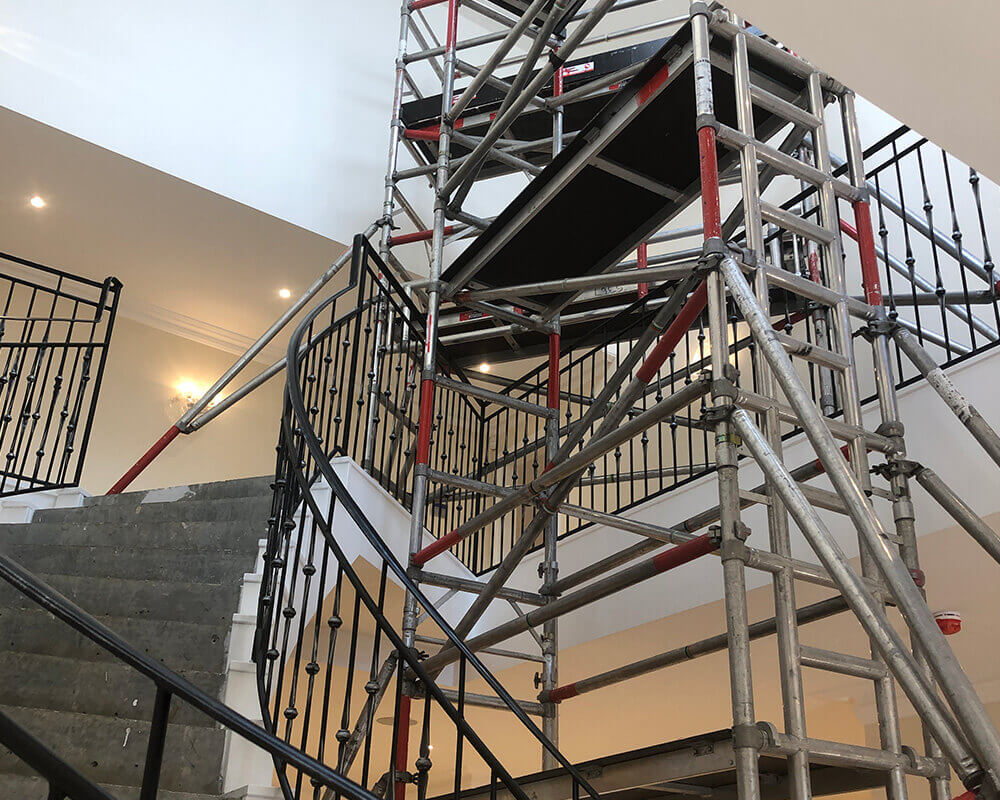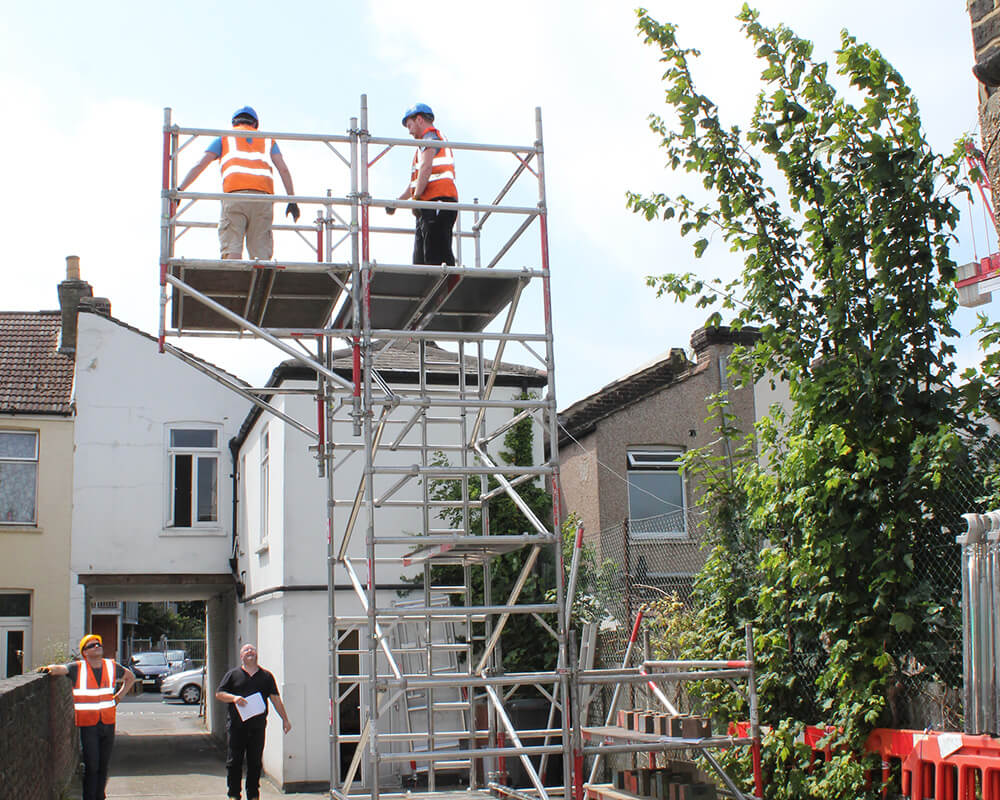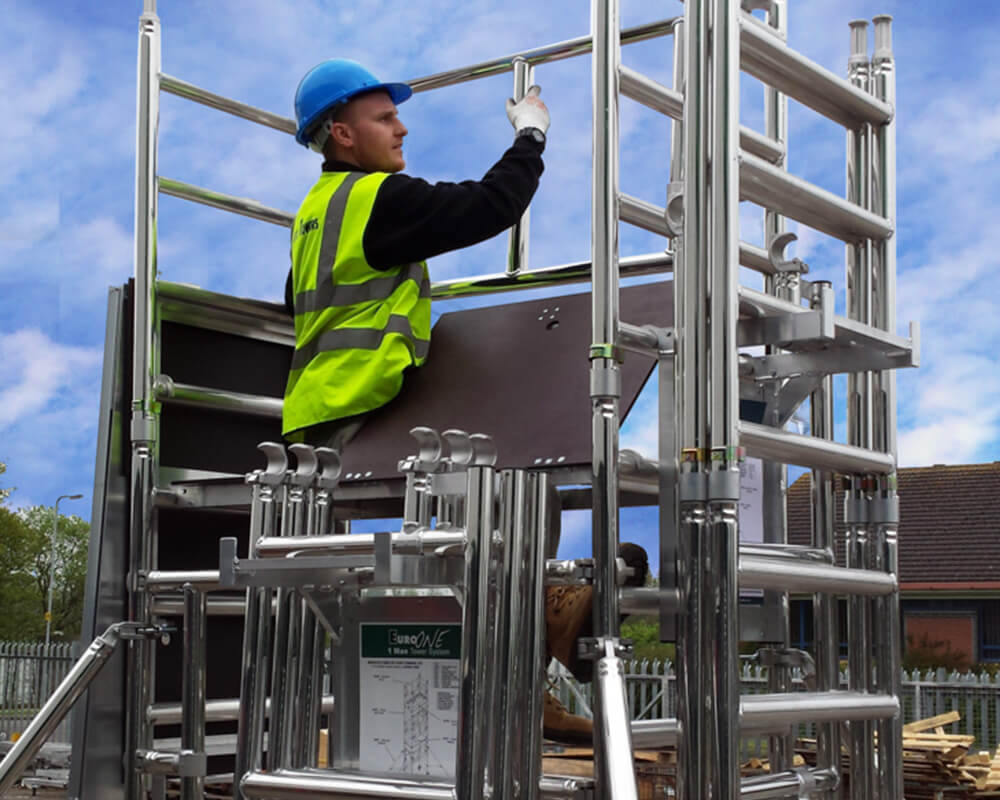Efficient Scaffold Hire: Maximising Your Project’s Potential
When it comes to construction and renovation projects, scaffold hire plays a crucial role in ensuring safety, efficiency, and productivity....
October 14, 2024
Are you planning a home renovation or DIY project that requires working at height? If yes, then safety should be your top priority. Using the right equipment is crucial to ensure a safe and efficient work environment. Scaffold towers are an excellent choice for projects that require stability and mobility. They provide a secure platform for workers, tools, and materials while ensuring ease of movement across the work area. But with so many options available, it can be daunting to rent a scaffold tower. In this blog post, we will address all your concerns related to scaffold towers. We’ll discuss why scaffold towers are essential for home projects, safety guidelines while using them, and precautions to take when working on them. Additionally, we’ll help you make an informed decision by discussing whether it’s better to rent or buy a scaffold tower for your specific needs.

Scaffold towers are essential for providing a stable working platform and accessibility to elevated areas within a home environment. These structures are necessary for compliance with working-at-height regulations and contribute to minimizing risks due to their solid construction. Moreover, scaffold towers ensure safety during long periods of work, offering a secure workspace for various home projects. When working on construction sites or at ground level, necessary precautions must be taken, especially when considering the piece of equipment used and the required safety certificates, such as the PASMA certificate in the UK. Additionally, the dismantling and erection of tower scaffolds, along with the use of loft ladders and castors, play a vital role in maintaining a safe work environment.
When tackling large construction projects, scaffold towers offer a safer alternative to ladders. With their level working platform, they minimize the risk of accidents, providing a secure and stable workspace at ground level or on uneven terrain. Scaffold towers are crucial for working at significant heights, ensuring accessibility and safety for both workers and heavy pieces of equipment. Their sturdy construction and certification make them essential for long periods of work on construction sites or home projects. Additionally, necessary precautions such as proper training and adherence to safety regulations, including PASMA, HSE, and UK standards, are paramount for the safe erection, dismantling, and use of tower scaffolds.
When working on construction projects, ensuring safety, accessibility, and efficiency is crucial. Scaffold towers offer a safe working platform for heavy equipment and construction work, especially in a home environment where tasks may involve working at ground level or high elevations like power lines. The versatility of scaffold towers makes them necessary for various construction sites, providing the necessary precautions for UK-based worksites. With their ease of erection and dismantling, tower scaffolds are essential pieces of equipment for any workspace. It’s important to consider the type of tasks and the work environment when choosing between tower scaffolding and loft ladders. Additionally, obtaining a PASMA certificate ensures that proper protocols are followed when using tower scaffolding, minimizing risks and ensuring a safe work environment.
Prior training courses are essential for scaffold tower work to be performed adequately. Compliance with safety regulations during scaffold tower assembly is crucial. Regular risk assessment of scaffold towers is necessary to uphold safety standards. Scaffold towers must be erected in accordance with safety executive guidelines to ensure optimal safety. The use of safety harnesses while working on scaffold towers is imperative. Safety should always be the top priority when working on construction sites, especially on tower scaffolds. Regular risk assessment is important to ensure safety in the work environment. The certificate from PASMA is necessary to prove compliance with safety regulations.
As you assemble tower scaffolds, it’s crucial to adhere to the guidelines provided in the instruction manual. Using base plates is essential for stability at ground level, ensuring a secure work environment. Implementing guard rails and advanced guard rail systems is necessary to maintain safety while working at heights for a long period of time. Regular safety inspections are crucial to identify and address any potential hazards promptly. When dismantling the scaffold tower, necessary precautions must be taken to avoid any risks or accidents. These measures align with the safety protocols recommended by UK regulatory bodies such as PASMA and HSE, ensuring that the assembly and loading process adhere to safety standards. It’s imperative to prioritise safety and follow these protocols when working on scaffold towers in any work site.
Working on scaffold towers requires strict adherence to safety protocols, especially considering adverse weather conditions. Guard rails must be in place to secure the towers in windy weather, and outriggers should be used for added stability. It is crucial to take necessary precautions during construction work and exercise caution when using scaffold towers in high winds. Safety guidelines from the UK’s Health and Safety Executive (HSE) and the Prefabricated Access Suppliers and Manufacturers Association (PASMA) emphasise the importance of following safety regulations and obtaining proper training certificates before working with tower scaffolds. Additionally, regular risk assessments, as well as thorough dismantling procedures, are essential to ensure a safe working environment. With the correct pieces of equipment and the application of necessary precautions, working on scaffold towers can be carried out safely and effectively.
Competent handling of tower scaffolds is crucial, in compliance with safety regulations. It’s essential to ensure that the tower scaffolding is erected on level ground and cleared of any obstructions, maintaining a safe work environment. To prevent falls, the use of safety harnesses when working at a height for a long period of time is necessary. Regular inspection of tower scaffolds is vital to uphold safety standards, especially on construction sites where necessary precautions should be observed. Additionally, individuals operating tower scaffolds should have the necessary certification from recognized bodies like PASMA in the UK to ensure proper dismantling techniques, ensuring workplace safety.
When working at heights, certification courses for scaffold tower safety become necessary to comply with safety regulations. These courses ensure that individuals are properly trained to work on scaffold towers, reducing potential hazards in the work environment. Following safety regulations for scaffold towers is essential, and this requires completing training courses to understand necessary precautions. Whether it’s for construction sites or home projects, safety training for scaffold towers is crucial to prevent accidents and ensure a secure workspace. Additionally, proper training helps in dismantling and erecting tower scaffolds safely. By following guidelines from organizations like PASMA and HSE, individuals can work confidently on tower scaffolding, ensuring their safety and that of others around them.
Welcome to our Scaffold Tower Usage and Safety FAQs, where we provide valuable insights into the optimal use of scaffold towers and essential safety precautions. Whether you’re a seasoned professional or a DIY enthusiast, understanding when and how to use scaffold towers is crucial for a safe and efficient work environment.
Scaffold towers are best suited for larger tasks that require a stable workspace, such as rendering, bricklaying, and roofing. Their advantages lie in size and surface area, making them ideal for prolonged jobs that demand a dedicated location.
Scaffold towers provide a solid workspace with enough room for tools and accommodate multiple workers. They are favoured for tasks like rendering and bricklaying due to their stability and larger surface area.
Ladders are convenient for quick jobs as they can be set up and taken down swiftly, offering easy mobility. They are best for odd jobs or tasks that do not require a prolonged, dedicated workspace.
Safety is paramount when using scaffold towers. Ensure users are trained in working at heights safely. Avoid working in adverse weather conditions, be mindful of the safe workload, and refrain from exceeding the tower’s load capacity to prevent accidents.
Prioritise safety by avoiding work in adverse weather, ensuring users are trained, and never surpassing the scaffold tower’s load capacity. Following these precautions is crucial to prevent falls and ensure a secure work environment.
Renting a scaffold tower can be a cost-effective option for smaller projects or one-time use. Consider the safety guidelines and precautions involved in using scaffold towers to ensure a secure working environment. If you’re unsure about which option is best for you, consult with access towers and we can provide expert advice tailored to your specific needs.
When it comes to construction and renovation projects, scaffold hire plays a crucial role in ensuring safety, efficiency, and productivity....
October 14, 2024
Tower scaffolds are essential structures in the construction industry, providing safe and stable platforms for workers to carry out tasks...
September 7, 2024
Anything above ground level is considered Working at Height. Access Towers are a large provider of PASMA Training and sit within the top 5% in the UK, allowing us to train the full range of 1-Day PASMA Courses to suit any of your work at height Tower Training requirements.
It is recommended by Health & Safety standards that those who are assembling Towers should be PASMA Trained. This will give operatives a 5-year qualification of competency for the use of mobile towers.
Certifications will vary depending on what equipment you’re hiring. It’s always best to speak with our Hire Desk if you are unsure, where they can advise what will be best for you or in more advanced working conditions, we can install onsite.
Training courses are for anyone using the equipment, from commercially to domestically. These will range from PASMA Training for the use of Towers, IPAF Training for the use of MEWPS as well as various other courses such as Safety Harness Training and First Aid.
Our Hire Desk are trained across the full range of work at height stock available and will be able to advise and assist cost-free.
We aim for a next-day turnaround, this is dependent on the transport routes and how busy we are at the time. It works both ways and could be earlier than your requested date.

